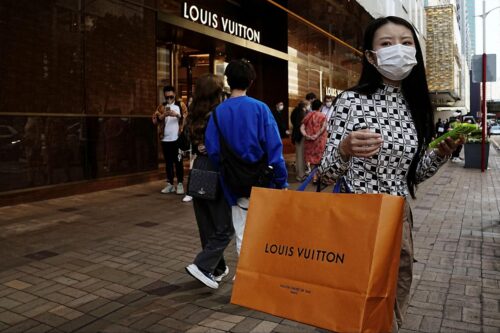China’s light industry rules the world but has few global brands
China is a light industry colossus, but why does it have so few global brands? A new government plan wants to change that.

Light industry — less capital-intensive and more consumer-oriented manufacturing of smaller consumer goods such as clothes, food, toys, plastic products, and home appliances — is still the backbone of China’s economy. In 2021, the added value of light industry accounted for 16.9% of national industrial added value, and China led the world in the output of more than 100 categories of light industry products. In 2020, of China’s total 3.84 million manufacturing enterprises, 720,000 were operating in light industry, which plays a crucial role in meeting consumption, export, and employment targets.
“Stable and resilient”
This week, the Ministry of Industry and Information Technology (MIIT) released a set of data on China’s light industry sector in the first half of the year, describing it as “stable and resilient” while many other areas of the economy have suffered production and growth drawbacks. According to MIIT data, in the first half of the year:
- The added value of light industries increased by 4.6%, 1.2 percentage points higher than the overall industrial value add.
- Output of shoes, watches, air conditioners, and heaters increased by 8.7%, 10.2%, 1.1%, and 2.3% year-on-year, respectively.
Over the same period, domestic corporate earnings, consumption, and exports have all expanded:
- The revenue of light industry enterprises was 11.4 trillion yuan ($1.68 trillion), a year-on-year increase of 7%, and the total profit was 693.3 billion yuan ($102.59 billion), a year-on-year increase of 5.2%, which was 4.2 percentage points higher than the overall industrial average.
- The cumulative export value of eight key light industry commodities was $211.74 billion, a year-on-year increase of 10%. Among them, the export growth rate of luggage, shoes, and toys all exceeded 20%, while exports of plastic products increased by 15.6%.
- Domestic retail sales of 10 categories of light industry commodities amounted to 3.34 trillion yuan ($495.66 billion), a year-on-year increase of 2.1%, among which retail sales of grain and foodstuffs, beverages, and tobacco and alcohol commodities increased by 9.9%, 8.2%, and 6.7% year-on-year, respectively.
But why so few global brands? A new plan aims to fix that (and promote rural consumption).
On June 17, the MIIT and five other government departments jointly issued Guiding Opinions for promoting the development of China’s light industry, which identifies certain problem areas and objectives up to 2025. According to the Guiding Opinions, China’s light industry still produces insufficient quantities of mid-to-high-end products, suffers from a lack of modernization of the industrial chain, and has an overall weak innovative capability. While China supplies the bulk of the world’s light industry commodities, it still has few globally competitive brands.
The new plan proposes a number of specific measures, including:
- Upgrading the industrial chain by means of the compilation of industrial chain maps by industry associations, research institutions, and key enterprises.
- Enhancing product innovation: The MIIT has already released guidelines for 431 light industry products, and is currently developing new guidelines for light industry products in health, childcare, and elderly care.
- Strengthening quality assurance: The MIIT is speeding up the formulation and revision of mandatory national standards in the fields of household appliances, furniture, lighting appliances, and baby products; it is also optimizing national and industry standards.
In order to expand domestic demand and consumption, especially of home appliances, the Guiding Opinions place great emphasis on rural consumption. Although rural areas are limited by weak distribution and logistics infrastructure, successive rounds of “home appliances to the countryside” campaigns aim to promote rural consumption of home appliances, especially color TVs, refrigerators, and washing machines. This fits in with other government initiatives to grow the economy in the countryside.
According to an industry report released in May, China’s home appliance market in 2021 amounted to 881.1 billion yuan ($130.44 billion), of which sales in rural areas, where consumption is growing faster than in urban areas, accounted for 277.5 billion yuan ($41.08 billion), a share of 31.5%.






